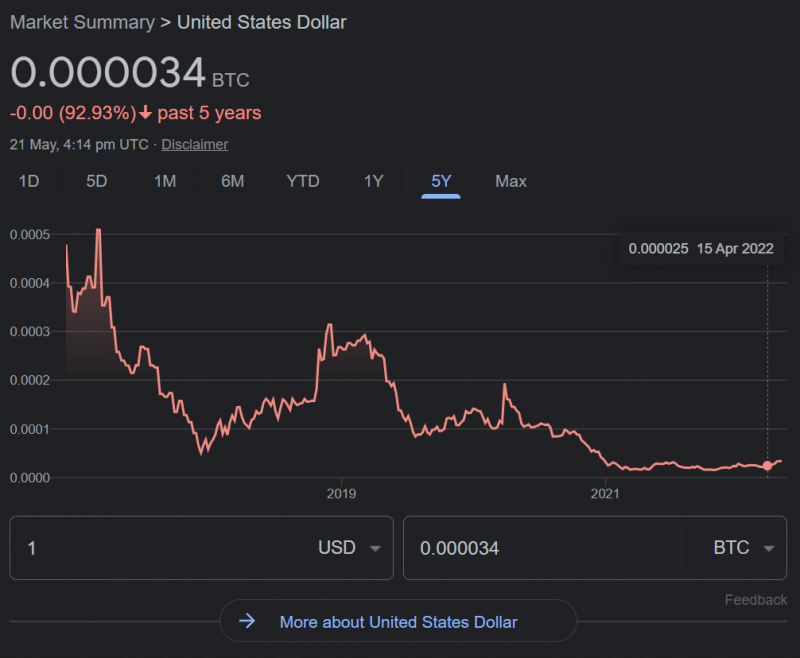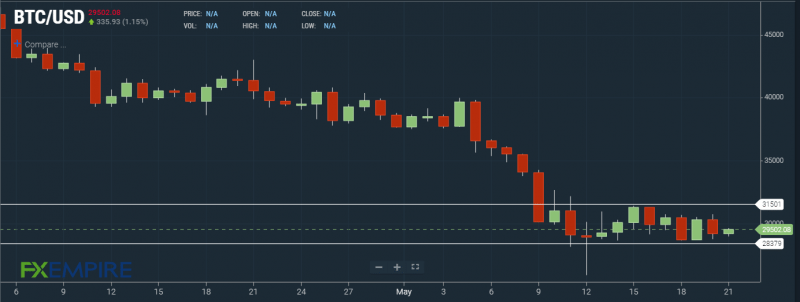How Can Inflation Affect Cryptocurrencies like Bitcoin and Ethereum?
Over the last two quarters, amid largely bearish market conditions, socio-political issues have played a key role in establishing BTC’s price trajectory.
Cryptocurrencies as investments are attractive for several reasons. For some, cryptocurrencies are a quick way to earn money as they chant ‘wen Lambo,’ while for others, it’s the trust in blockchain technology or a certain project. For some, getting into cryptos could be as basic as jumping on the hype train, primarily due to FOMO.
All that aside, cryptocurrencies like Bitcoin have often been called an excellent inflation hedge and a store of value. So, as inflation continues to rise, where do cryptocurrencies and inflation cross paths?
What is Inflation?
Inflation is when the decreasing value of a currency, like the US dollar, increases the price of goods and services over time, thus helping the economy grow. However, unlike fiat currencies, cryptos can’t be manipulated to the same extent by changing interest rates, or so they said.
In early May, bitcoin (BTC) and ether (ETH) rallied on the news of interest hike by FEDs, rising about 3.5% and 1.2%, respectively. Soaring inflation has been one driver of broad losses across the crypto markets. The United States Federal Reserve announced a 0.5% hike in interest rates, the highest hike ever in interest rates in the last two decades.
While cryptocurrencies saw short-term price spikes after the news of the interest hike, the price gains couldn’t sustain. Many analysts, however, still believe that cryptocurrencies have been behaving in line with equities, similar to a big tech stock.
Bitcoin – an inflation hedge?
In the post-pandemic era, USD’s buying power against BTC fell further, taking a significant dip in March 2020, followed by another drop towards the end of 2020, as seen above. Additionally, the USD’s value has further dipped due to the government’s continuous money printing.
Over the last 50 years, inflation has already reduced the value of the USD by 85%, which strengthened BTC’s narrative as an excellent alternative to fiat money. However, in November 2021, after making an all-time high of $69,000, bitcoin’s price began its downtrend. Around the same time, USD purchase power against BTC started to rise, appreciating in November-end 2021 and then again in March 2022.
Notably, USD’s purchase power against BTC has been in an uptrend for the most part of this year. The same puts bitcoin’s inflation hedge narrative at risk. Additionally, constant issues surrounding market volatility and the high price of a single BTC unit pose friction to investors, especially newcomers.
While investment alternatives like bitcoin mining-backed ETFs and BTC ETPs have offered decent exposure to investors of all sorts, the constant volatility continues to haunt BTC traders and investors and newcomers in the market.
Cryptocurrencies and inflation
For the most part of bitcoin’s existence, BTC prices haven’t reacted negatively to policy uncertainty shocks, partly consistent with the notion of Bitcoin’s independence from government authorities. However, amid largely bearish market conditions, socio-political issues have played a key role in establishing BTC’s price trajectory over the last two quarters.
Furthermore, BTC’s rising correlation with the two major indices—the S&P 500 and Nasdaq- could play a S&P 500 and Nasdaq could play spoilsport in the coin’s inflation hedge narrative as the market matures.
Bitcoin’s price was down 57.02% from its all-time high price of $69,000, which also hampered the top coin’s narrative as a store of value. At the time of writing, BTC traded at $29,504.67, close to the $30,000 psychological support/resistance level.
The coin has maintained a rangebound trajectory between the $31,500 and $28,380 mark since May 10.
For now, with the larger market tilting more towards bearish, whether BTC could outperform traditional assets and fiat currency still remains a crucial question. Many analysts are of the opinion that the maturing bitcoin and cryptocurrency market has given way to diminishing ROIs over the years.






